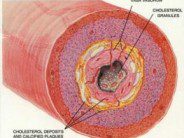This article was originally written in May of 1998 and appeared in RWJ Today during my first year of medical school. It is the third part of the Back to the Future series.
On April 6, National Cancer Institute (NCI) researchers were extremely excited to announce that a synthetic estrogen antagonist known as tamoxifen could reduce the incidence of breast cancer by 45 percent in healthy women with greater than normal risk for the disease. The study was coordinated by the National Surgical Adjuvant Breast and Bowel Project (NSABP) in Pittsburgh and was conducted in more than 300 clinics nationwide, involving 13,388 women. Tamoxifen has been used for over 20 years to treat breast cancer but its preventative capabilities were never known. The NCI investigators felt the trial results, demonstrating the preventative efficacy of tamoxifen were so conclusive that the study was stopped 14 months ahead of schedule. At this time, participants taking placebos were informed of the results and offered tamoxifen. Tamoxifen works by binding to the intracellular estrogen receptor and thus competes with the natural ligand and suppresses its growth-promoting potential. While tamoxifen inactivates the receptor’s actions in breast tissue, in uterine tissue it can stimulate its activity. Thus, one negative aspect of its use is a greater than two-fold increase in endometrial cancer among tamoxifen users as compared to participants taking placebos. In addition, there is a greater than three-fold increase in risk for blood-clotting disorders, such as pulmonary embolism and deep vein thrombosis. Researchers reported, however, that none of these increased risks were evident in women less than 50 years of age. There are an estimated three million women who, given their predisposing characteristics, would be eligible to take tamoxifen to prevent breast cancer. The Food and Drug Administration will now need to establish guidelines delineating who qualifies to take the drug, and in what period of life the five-year prophylaxis should be taken.
References:
1. Marshall, Eliot (1998) “Tamoxifen: ‘A Big Deal’, But a Complex Hand to Play.” Science 280, 196.
2. Grady, Denise “Breast Cancer Drug Dilemma: Who Should Take It, and When?” New York Times F1, April 14, 1998.










 DrSamGirgis.com is a blog about medicine, nutrition, health, wellness, and breaking medical news. At DrSamGirgis.com, the goal is to provide a forum for discussion on health and wellness topics and to provide the latest medical research findings and breaking medical news commentary.
DrSamGirgis.com is a blog about medicine, nutrition, health, wellness, and breaking medical news. At DrSamGirgis.com, the goal is to provide a forum for discussion on health and wellness topics and to provide the latest medical research findings and breaking medical news commentary.
{ 0 comments… add one now }